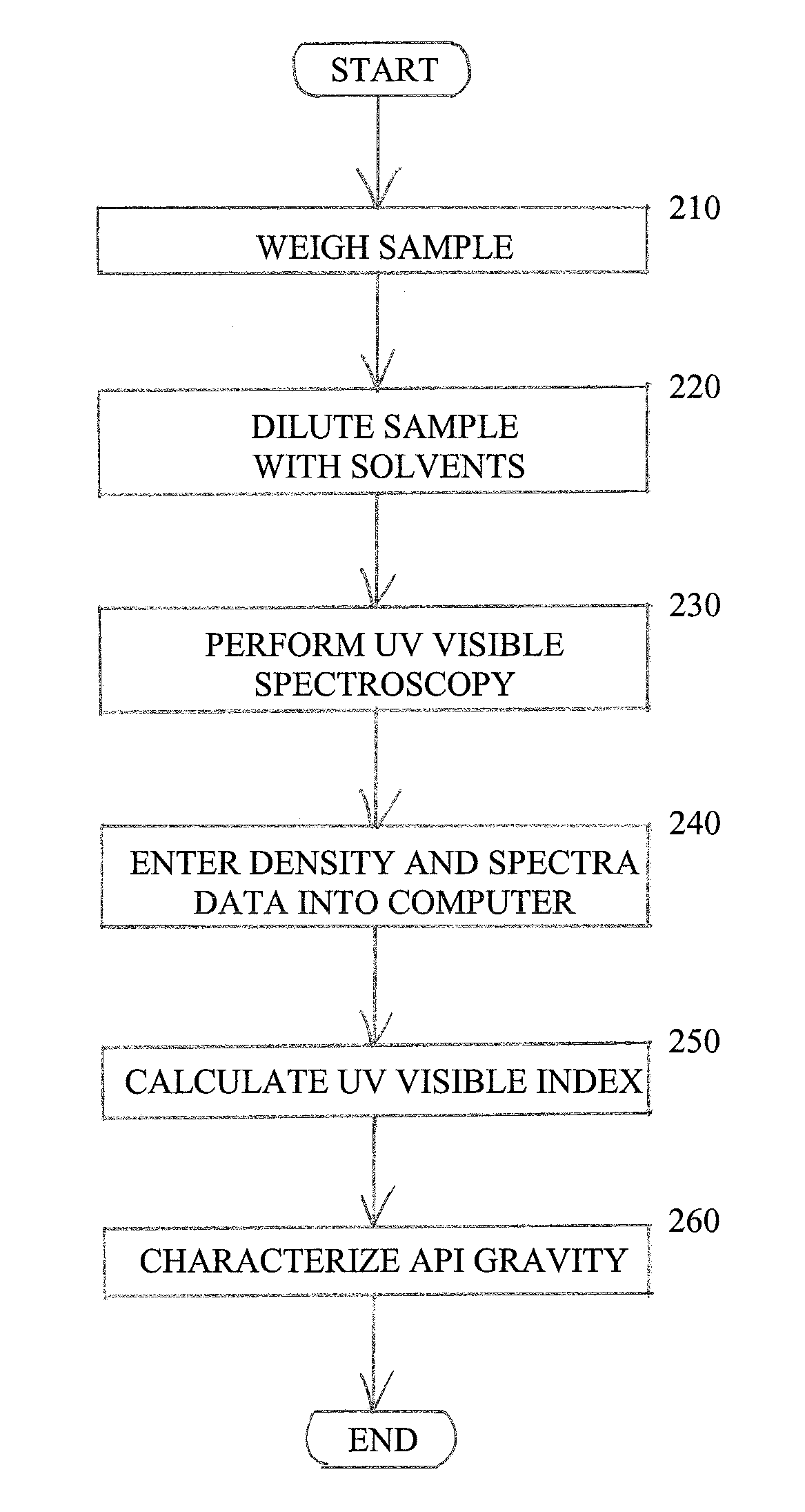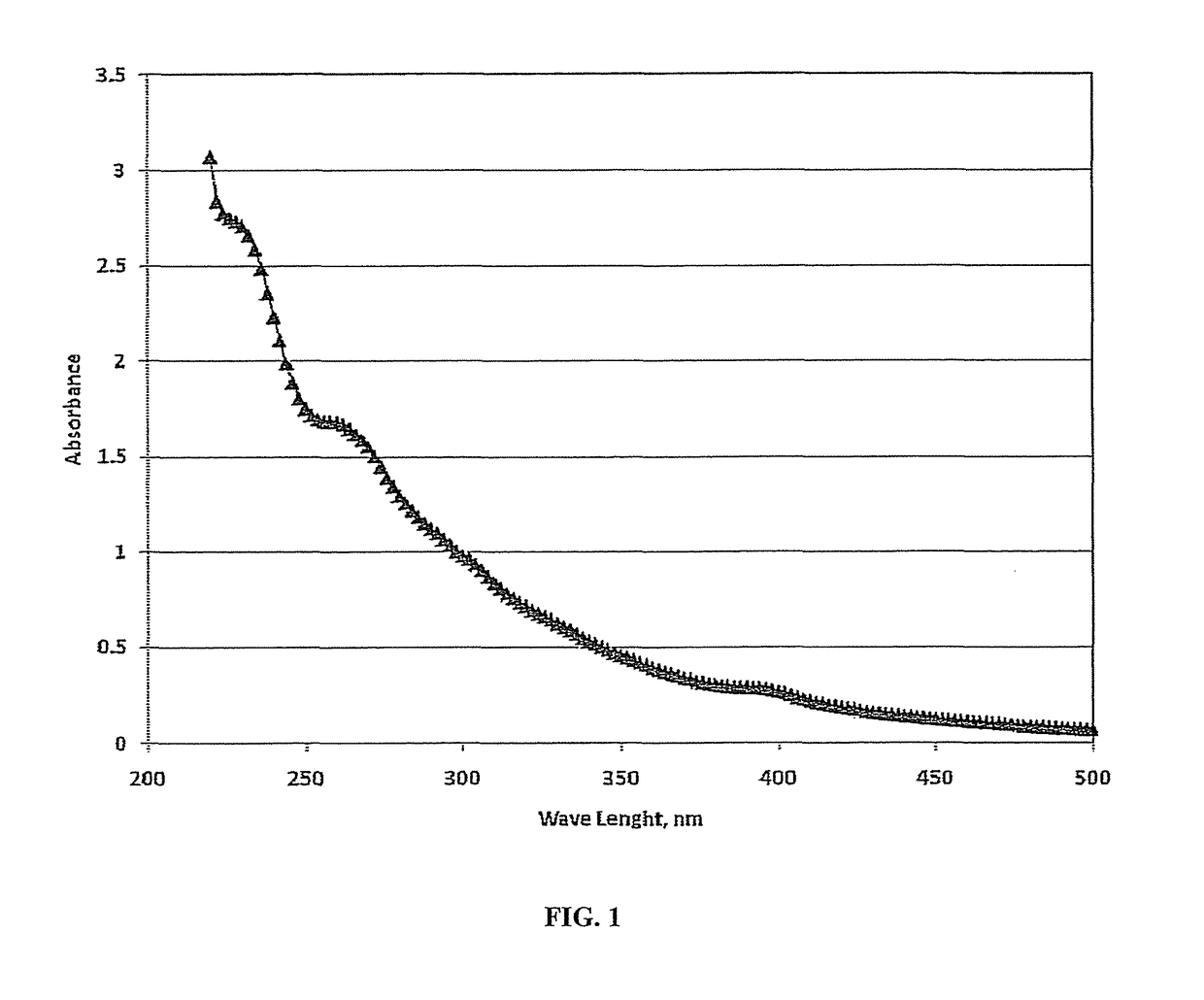Characterization of crude oil by ultraviolet visible spectroscopy
a technology of ultraviolet visible spectroscopy and crude oil, which is applied in the direction of fluorescence/phosphorescence, material excitation, instruments, etc., can solve the problems of high labor intensity, high labor intensity, and high labor intensity of crude oil assay work, and achieve the effect of relatively rapid and inexpensive acquisition
- Summary
- Abstract
- Description
- Claims
- Application Information
AI Technical Summary
Benefits of technology
Problems solved by technology
Method used
Image
Examples
Embodiment Construction
[0022]FIG. 2 shows a process flowchart of steps that occur in one embodiment of the invention. Crude oil samples were prepared and analyzed by ultraviolet visible spectrophotometry between 200-500 nm, preferably 220-400 nm using a Jasco V-530 double beam spectrophotometer. In step 210, a crude oil sample is weighed.
[0023]In step 220, solutions were prepared by dissolving a milligram-sized sample of the crude oil in a two-part solvent system consisting of a paraffinic solvent having from 5-20 carbon atoms, preferred solvent being iso-octane, and a polar solvent, preferably, dichloromethane, at a ratio of 90:10% v / v. The polar solvents are selected based on their Hildebrand solubility factors or their two-dimensional solubility parameters. The overall Hildebrand solubility factor is a well known measure of polarity and has been calculated for numerous compounds. See, for example, the Journal of Paint Technology, Vol. 39, No. 505 (February 1967). The solvents can also be described by t...
PUM
| Property | Measurement | Unit |
|---|---|---|
| wavelength range | aaaaa | aaaaa |
| wavelength range | aaaaa | aaaaa |
| wavelengths | aaaaa | aaaaa |
Abstract
Description
Claims
Application Information
 Login to View More
Login to View More - R&D
- Intellectual Property
- Life Sciences
- Materials
- Tech Scout
- Unparalleled Data Quality
- Higher Quality Content
- 60% Fewer Hallucinations
Browse by: Latest US Patents, China's latest patents, Technical Efficacy Thesaurus, Application Domain, Technology Topic, Popular Technical Reports.
© 2025 PatSnap. All rights reserved.Legal|Privacy policy|Modern Slavery Act Transparency Statement|Sitemap|About US| Contact US: help@patsnap.com



